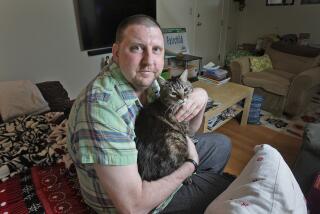Ailing Woman Uses Doctor’s Suicide Device
- Share via
DETROIT — An Alzheimer’s patient traveled 2,000 miles to commit suicide with the help of a doctor who built a device that gave her a lethal dose of chemicals.
The last thing Janet Adkins told Dr. Jack Kevorkian on Monday was, “You just make my case known.” Then, he said, she pressed a button on the contraption that released the lethal mixture.
Some medical ethicists Tuesday called the doctor’s actions immoral and perhaps illegal. A prosecutor said he would wait for autopsy results before deciding whether to charge Kevorkian, and will seek an injunction to prevent the doctor from using the device again.
Kevorkian told the Associated Press in a telephone interview late Tuesday that it was the first time he had used the device to assist a suicide.
The Portland, Ore., woman’s husband defended his wife’s right to die.
“It’s not a matter of how long you live, but the quality of life you live, and it was her life and her decision and she chose,” Ron Adkins told Portland’s KATU-TV. “She made that decision based upon the fact that the things she loved most--reading, literature, music--and all that she couldn’t do any more.”
One of the couple’s three sons, Neil, said: “She was in a very good state of mind, that’s the amazing thing.
“It was not a desperate thing or a depressed situation. She was the one that helped us all through it,” Neil Adkins told KGW-TV in Portland.
Kevorkian said Mrs. Adkins traveled to Michigan during the weekend to use his suicide device. He drove the 54-year-old woman in his van to a park in northern Oakland County on Monday afternoon.
According to Kevorkian, he and one of his relatives attached Adkins to a heart monitor, then put an intravenous tube in her arm.
The tube first delivered a saline solution. Kevorkian said Adkins then pressed a button that injected thiopental, a coma-inducing drug, followed moments later by potassium chloride, which stops the heart within minutes.
He said she was unconscious in 25 seconds, and died in five or six minutes.
“It simulates exactly the judicial executions that we do now with legal executions, except with this device the person does it himself by pushing a button,” Kevorkian told the Detroit News on Monday.
The doctor is a retired pathologist and an outspoken advocate of what he calls doctor-assisted suicide.
“Physicians should not be killers, even in cases where the patient requests it and there is a compassionate reason behind the act,” said Susan Wolf of the Hastings Center for biomedical research in Briarcliff, N.Y. “They take an oath to do no harm, and taking a life is doing harm.”
Kevorkian said in March that he expected to be prosecuted after the first use of the drug-injecting device. He also said he would not charge patients and that he might use it to take his own life some day.
After Adkins died, Kevorkian notified police. Oakland County prosecutor Richard Thompson said he won’t decide if he will bring charges against the doctor until he gets an autopsy report and state police finish their investigation. The police have the device, Thompson added.
Kevorkian said Adkins came to Michigan with her husband and a friend, both of whom stayed at a motel while she died and caught a flight back to Oregon later Monday night. In Oregon, providing the means to commit suicide is a felony, but Michigan has no law against suicide assisted by a physician.
Kevorkian said the Adkinses contacted him in October after learning about his device, and he recommended treatment with an experimental drug at a Seattle hospital.
“It didn’t work,” Ron Adkins said. “It was hard on us, all of us, because we’ve been mourning for an entire year knowing that this was what she had in mind.”
The device itself--an aluminum frame with three suspended bottles and a small electric motor--is not illegal, said Gerald Poisson, assistant Oakland County prosecutor. But in certain cases, the person who made it available to the suicide victim could be charged with homicide, he said.
Jim Baughman of the Wayne County Prosecutor’s Office in Detroit said last year that helping someone die would not be a crime if the patient injected the drugs.
But two lawyers specializing in medical ethics, after hearing details of the Kevorkian case, said his actions were improper.
“What this physician did was way over the line,” Wolf said. “It was unethical and may well have been illegal.”
According to the American Medical Assn., passive euthanasia is ethical, said Reinhard Priester of the Center for Biomedical Ethics at the University of Minnesota.
Passive euthanasia might, for example, involve withholding food from a comatose patient believed to have no chance of recovery, he said.
But Priester said Kevorkian, by arranging a suicide ostensibly with the patient’s consent, appeared to have participated in active euthanasia--which the AMA has deemed morally inappropriate.
More to Read
Sign up for Essential California
The most important California stories and recommendations in your inbox every morning.
You may occasionally receive promotional content from the Los Angeles Times.










